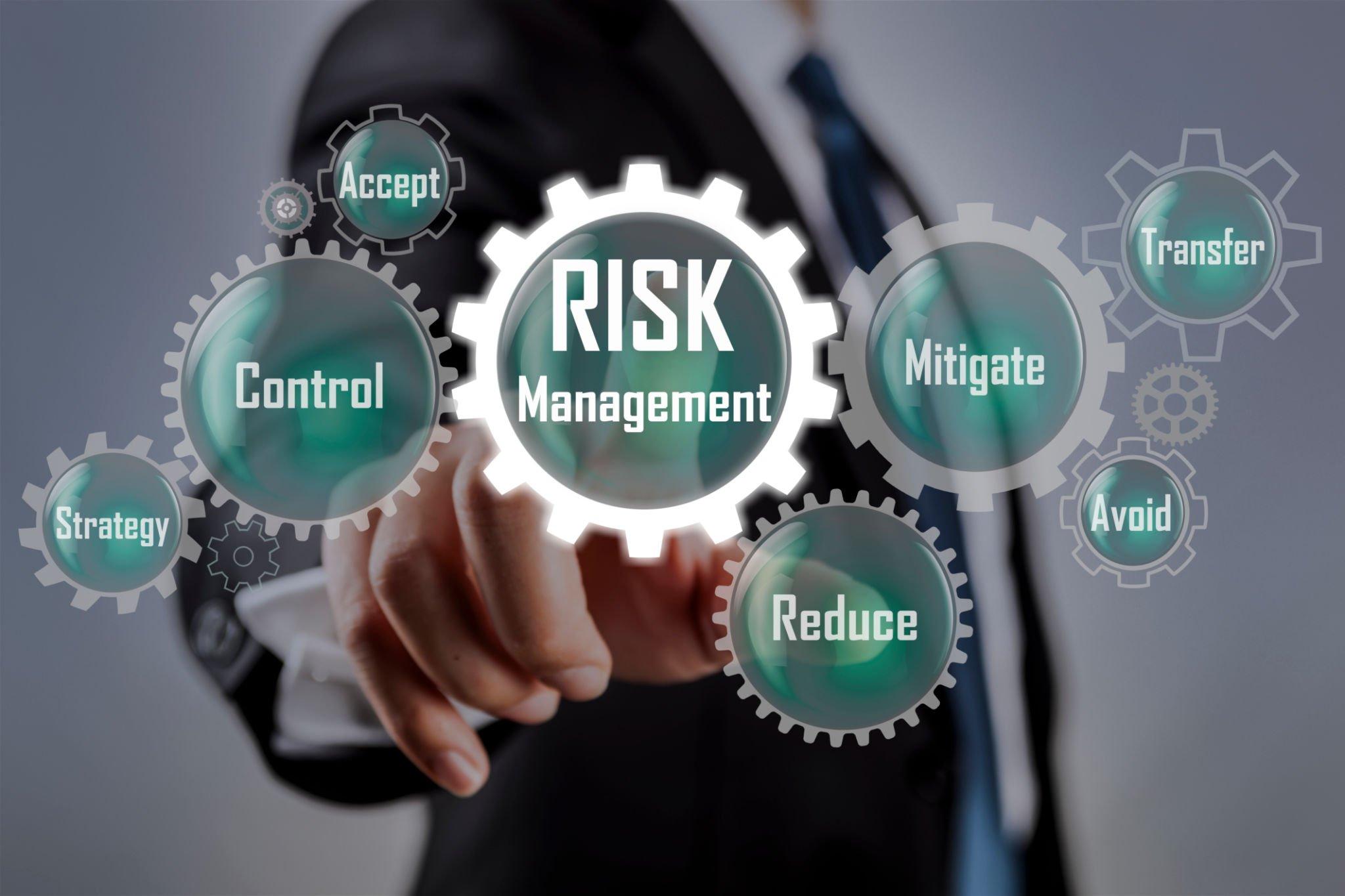Business
Understanding Risk Management in Business: Techniques, Benefits, and Principles

In the dynamic world of business, uncertainty is a constant companion. Companies face a myriad of risks that can potentially impact their operations, financial stability, and reputation. To navigate these challenges successfully, businesses employ risk management strategies to identify, assess, and mitigate potential threats while seizing opportunities. In this comprehensive guide, we will explore the key aspects of risk management in business, equipping you with the knowledge to safeguard your enterprise and promote sustainable growth.
What is Risk Management in Business?
Risk management in business is a systematic approach to identifying, evaluating, and responding to risks that could hinder the achievement of organizational objectives. These risks can originate from various sources, such as economic downturns, technological disruptions, natural disasters, regulatory changes, or even internal factors like human error. By understanding and managing these risks, businesses can proactively protect themselves from potential harm and optimize their decision-making processes.
How does risk management process work?
The risk management process is a systematic approach used by organizations to identify, assess, mitigate, and monitor risks that could impact their objectives. It involves several interconnected stages to effectively manage uncertainties and make informed decisions. Below is a breakdown of how the risk management process works:
a) Risk Identification: The first step involves recognizing potential risks that the business may face. This process involves gathering information from internal and external sources, brainstorming with stakeholders, and utilizing historical data to identify a wide range of risks.
b) Risk Assessment: Once risks are identified, they must be assessed to determine their potential impact and likelihood of occurrence. This step helps prioritize risks based on their significance, enabling resources to be allocated efficiently.
c) Risk Mitigation Strategies: Following risk assessment, businesses develop strategies to manage and reduce the impact of identified risks. These strategies can involve risk avoidance, risk transfer (e.g., insurance), risk reduction through preventive measures, or risk acceptance if the potential impact is minimal.
d) Risk Monitoring and Review: Risk management is an ongoing process. Regular monitoring of risk factors and the effectiveness of mitigation strategies allows businesses to adapt and respond promptly to emerging risks.
Types of risk management in business
In business, there are several types of risk management approaches that organizations can adopt to identify, assess, and address potential risks. Each type focuses on specific aspects of the business and requires tailored strategies to manage the associated uncertainties. Here are some common types of risk management in business:
1. Financial Risk Management:
This type of risk management focuses on managing financial exposures and uncertainties that could impact a company’s financial stability and performance.
Financial risk includes market risk (fluctuations in interest rates, exchange rates, and stock prices), credit risk (risk of default by borrowers), liquidity risk (availability of cash to meet obligations), and operational risk (financial losses due to internal processes or systems failures).
2.Operational Risk Management:
Operational risk management aims to identify and mitigate risks associated with internal processes, systems, and human errors.
This type of risk management involves ensuring business efficiency, security, and continuity by addressing potential threats to operations, supply chains, technology, and human resources.
3.Strategic Risk Management:
Strategic risk management involves identifying risks related to business strategy and decision-making processes.
It focuses on assessing risks that could hinder the achievement of organizational goals, market changes, competitive dynamics, or disruptive innovations.
4.Compliance Risk Management:
Compliance risk management aims to ensure adherence to laws, regulations, industry standards, and internal policies.
Non-compliance can lead to legal, financial, and reputational consequences, making it crucial for businesses to manage compliance-related risks effectively.
5.Reputational Risk Management:
Reputational risk management involves safeguarding the company’s image and brand reputation.
This type of risk management addresses potential negative publicity, customer complaints, and any actions that could damage the company’s credibility and trust among stakeholders.
6.Market Risk Management:
Market risk management focuses on understanding and mitigating risks arising from changes in market conditions and dynamics.
It includes risks related to demand fluctuations, changes in customer preferences, and shifts in market trends.
7.Project Risk Management:
Project risk management is specific to managing uncertainties in individual projects undertaken by the organization.
It involves identifying potential risks that could impact project schedules, budgets, and deliverables and implementing strategies to manage those risks effectively.
8.Environmental Risk Management:
This type of risk management addresses risks associated with environmental factors, such as climate change, natural disasters, and regulatory changes related to environmental protection.
Environmental risk management helps businesses prepare for and respond to environmental challenges that may impact their operations and sustainability.
9. Legal Risk Management:
Legal risk management focuses on identifying and mitigating risks related to legal and regulatory issues that could lead to lawsuits, fines, or penalties.
It involves ensuring compliance with laws, contracts, and agreements to avoid legal liabilities.
Each of these types of risk management requires a tailored approach, and businesses often integrate multiple risk management strategies to create a comprehensive risk management framework that aligns with their specific goals and objectives.
Risk management techniques
Risk management techniques are strategies and methodologies used by organizations to identify, assess, and mitigate risks. These techniques enable businesses to proactively address uncertainties and safeguard their assets, reputation, and long-term viability. Here are some common risk management techniques:
Risk Assessment and Prioritization:
Conducting regular risk assessments helps identify potential risks to the organization. Prioritizing risks based on their potential impact and likelihood allows the allocation of resources to address the most critical risks first.
Risk Avoidance:
This technique involves taking actions to eliminate or avoid certain high-risk activities or business decisions altogether. By avoiding specific risks, organizations prevent exposure to their potential negative consequences.
Risk Reduction:
Risk reduction focuses on implementing measures to decrease the likelihood or impact of identified risks. This can involve enhancing safety procedures, improving quality control, or investing in technology to mitigate operational risks.
Risk Transfer:
Risk transfer involves shifting the financial burden of a risk to an external party. This can be achieved through insurance policies or contractual agreements that transfer certain risks to insurance providers or business partners.
Contingency Planning:
Contingency planning is about creating actionable plans to respond to potential risk events. It involves identifying alternative courses of action to mitigate the impact of adverse events should they occur.
Scenario Planning:
Scenario planning involves creating hypothetical scenarios to anticipate potential risks and their impacts. By considering various scenarios, organizations can develop appropriate response strategies for each situation.
Business Continuity Planning:
Business continuity planning aims to ensure the organization can continue operating during and after unexpected disruptions. It involves establishing recovery strategies and backup plans for critical processes and systems.
Diversification:
Diversification is a risk management strategy that involves spreading resources, investments, and operations across different areas. By diversifying, organizations reduce their exposure to specific risks and minimize the potential impact of any single risk event.
Data Analytics and Technology:
Leveraging data analytics and risk management software enables organizations to identify patterns and trends that could indicate potential risks. This data-driven approach enhances decision-making and risk prediction.
Employee Training and Education:
Educating employees about risk management principles and best practices fosters a risk-aware culture within the organization. Well-informed employees are better equipped to identify and report risks in their respective roles.
Continuous Monitoring and Review:
Risk management is an ongoing process. Regularly monitoring risks and the effectiveness of risk mitigation strategies allows organizations to adapt to changing circumstances and identify emerging risks.
Stress Testing and Simulation:
Stress testing and simulation involve subjecting the organization to hypothetical scenarios or extreme conditions to assess its resilience and identify potential vulnerabilities.
By implementing these risk management techniques, organizations can effectively navigate uncertainties, minimize potential losses, and capitalize on opportunities, ensuring their long-term success and sustainability.
What are the benefits of focusing on risk management?
Focusing on risk management offers numerous benefits for organizations across various industries. By adopting a proactive approach to identifying, assessing, and mitigating risks, businesses can gain a competitive advantage and achieve long-term success. Here are some key benefits of focusing on risk management:
a. Improved Decision Making: Risk management provides decision-makers with a comprehensive understanding of potential threats, enabling them to make more informed and strategic choices.
b. Enhanced Resilience: Businesses that prioritize risk management are better prepared to handle unexpected challenges, minimizing disruptions to operations.
c. Cost Savings: Effective risk management can lead to reduced financial losses due to early identification and mitigation of potential risks.
d. Stakeholder Confidence: Stakeholders, including investors and customers, gain confidence in the business’s ability to navigate uncertainties successfully.
Which of the following represents a principle of risk management?
The following principle of risk management is mentioned in the article:
Risk Management is an Integral Part of the Organizational Process: Risk management should be embedded within the organization’s culture, strategy, and decision-making processes. It should be viewed as an essential aspect of business operations rather than an isolated function.
This principle emphasizes that risk management should be integrated into the fabric of the organization, influencing all levels of decision-making and becoming an integral part of how the business operates.
Conclusion:
Risk management is a vital practice that empowers businesses to proactively handle potential threats and capitalize on opportunities. By following a structured risk management process, employing various risk management techniques, and adhering to fundamental principles, businesses can safeguard their interests, optimize performance, and foster long-term sustainability in an ever-changing business landscape.












